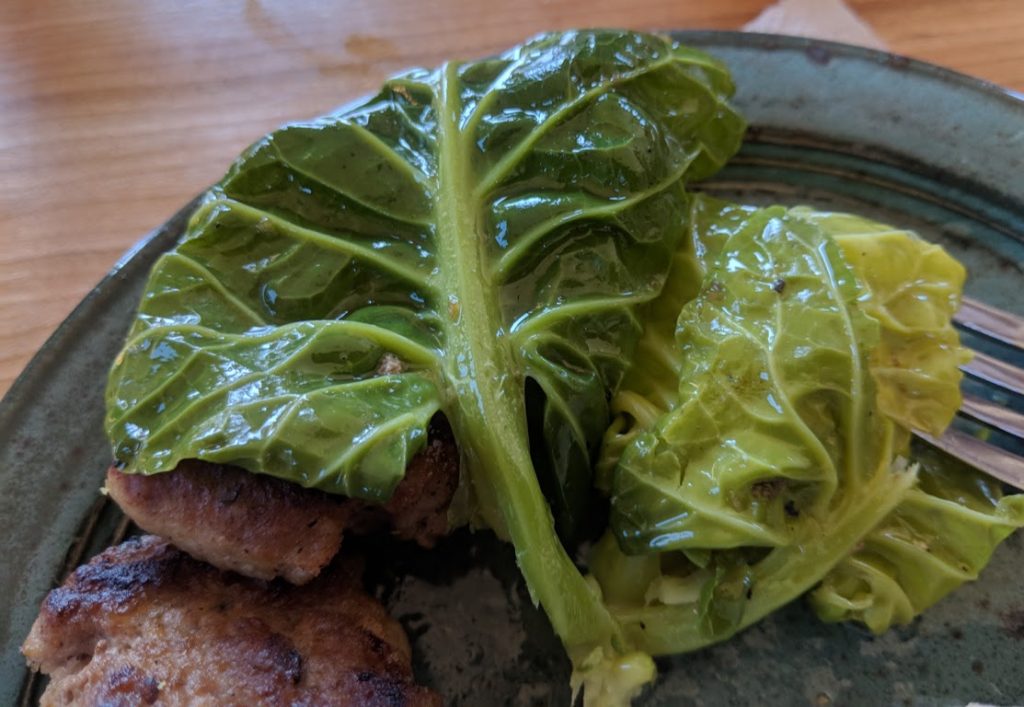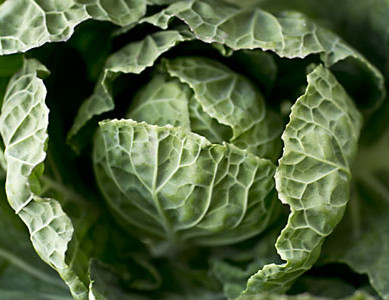 So, the sprouts themselves grow on the sides of a long stalk, sheltered by the leaves of the plant. The top-most leaves, are delicate, almost like baby cabbages and a special treat when you are harvesting the plants. This week, probably this week only, we have this special offer. Brussel Tops.
So, the sprouts themselves grow on the sides of a long stalk, sheltered by the leaves of the plant. The top-most leaves, are delicate, almost like baby cabbages and a special treat when you are harvesting the plants. This week, probably this week only, we have this special offer. Brussel Tops.
What do I do with them?
Sauté or Stir Fry them, toss them in soups, or as we did, just blanch them whole briefly in stock or broth and then set them on the plate for eating.
With a texture similar to a baby savoy cabbage and they are just delightful. They have a sweet, cabbage-like freshness with a light flavor of brussels sprouts, but without any of the latter’s sometimes sulphury undertones. As the Guardian noted, “They cook almost instantly to a submissive silkiness.”
You could go for this more elaborate (well more elaborate then dipping them in a pot of stock currently cooking on the stove), Spicy Stir-fried Sprout Tops from the Kitchenist Blog or Maple Glazed Sprout Tops with Crispy Pork (in this recipe, I think streaked pork would be jowl or belly)
Is it worth it? Are they good for me?
Yes, and Yes, of course.

First of all they are easy! So tender, easier than almost any other green. And they can please folks that like Sprouts or cabbage definitely, but their flavor is also sweeter and milder that the other 2 so good for the folks that aren’t huge brassica lovers.
“Sprout tops are vitamin-dense, and have exceptionally rich stores of two vitamins in particular: anti-inflammatory vitamin K, which like calcium, helps build bone density; and vitamin C, which helps strengthen the immune system. Along with broccoli, they have the highest levels of glucosinolate compounds (which are believed to protect against cancer) of the (glucosinolate-rich) brassica family. ”
Need more, read the entire article, Why Brussels Sprout Tops are Good for You, in The Guardian.